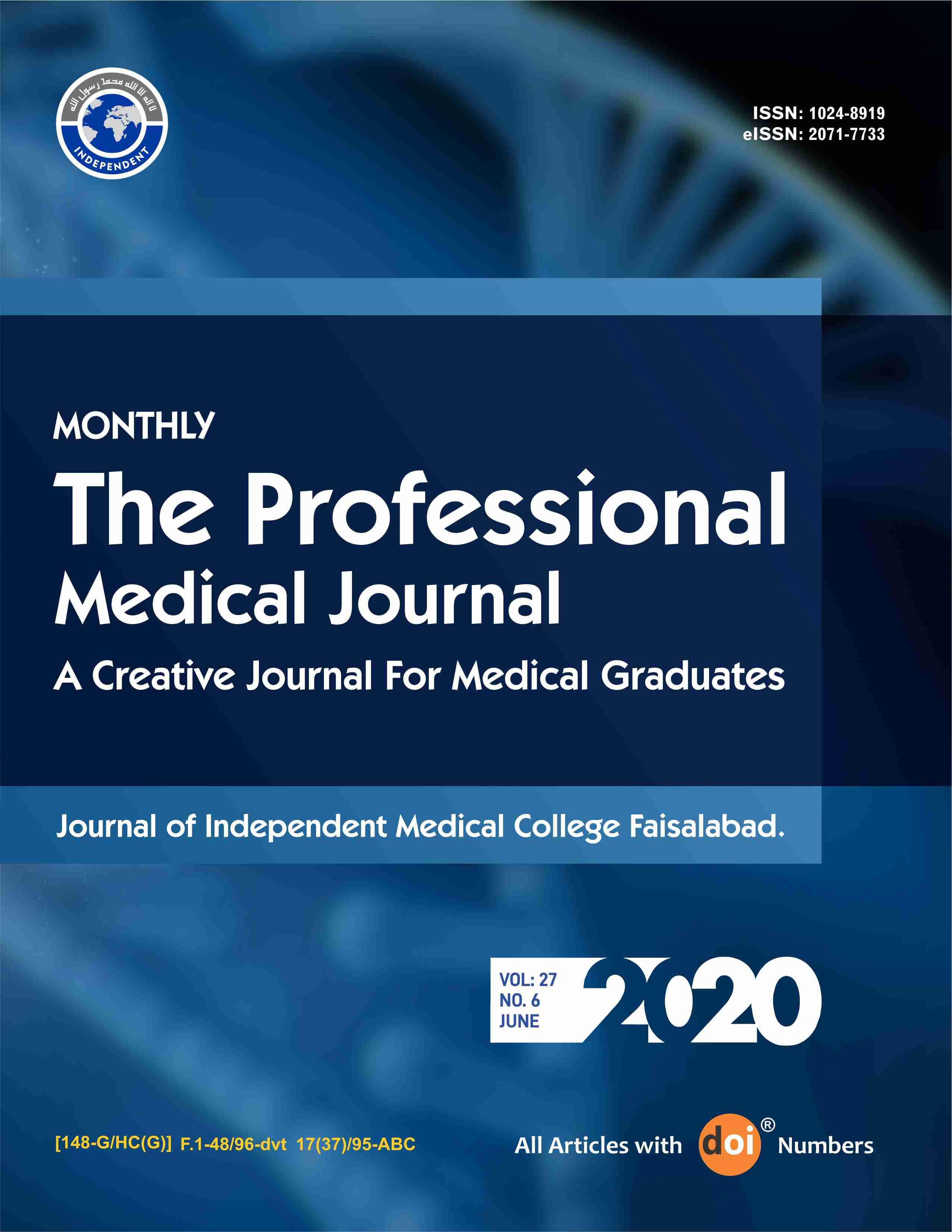Histoacryl glue injection without lipiodol dilution and post sclerotherapy bleeding; prevalence among patients with upper GIT bleed.
DOI:
https://doi.org/10.29309/TPMJ/2020.27.06.3982Keywords:
Endoscopic Sclerotherapy, History Injection, Liver Cirrhosis, Portal Hypertension, Upper GIT BleedingAbstract
Objectives: To determine role of histoacryl injection in preventing upper acute upper gastrointestinal bleeding. Study Design: Prospective Study. Setting: Gastroenterology ward of DHQ Teaching Hospital Gujranwala. Period: One year from 1st September 2017 to 31st August 2018. Material & Methods: Patients presented to the study hospital having upper gastrointestinal bleeding of acute onset due to gastric varices bleeding were included in this study. All other cases having upper GIT bleeding due to other causes like peptic ulcer disease, Mallory weise syndrome, gastritis or esophageal varices were not included in this study. Both male and female patients were included irrespective of their age. Hemostasis in these cases was achieved by endoscopic sclerotherapy using histoacryl glue (N-butyl-2-cyanoacrylate) injection without lipoidal dilution. After first session of injection patients were called on follow up after 5 days and they were assessed for recurrent GIT bleeding and treatment failure. All data was documented on a predesigned performa. Frequencies and percentage were calculated and results were expressed in tabular form and graphs. Results: Total 80 cases were studied including 56% male and 44% female cases. Endoscopic sclerotherapy using histoacryl injection proved successful in 87.5% cases and recurrent bleeding occurred in 12.5% cases. Minimum age of patients was 25 years and maximum age 70 years with mean age of 45 years. Total 450 cases presented in study institution with Upper GIT bleeding during study period and causes among them were liver cirrhosis in 92% cases, peptic ulcer disease in 4% cases, Malloryweise Syndrome in 2.5% and gastritis in 1.5% cases. In our study group cause of gastric varices was liver cirrhosis due to viral hepatitis in 73% cases and alcoholic hepatitis in 27% cases. After single session of endoscopic histoacryl glue injection to 80 cases, no bleeding occurred after 5 days in 71(88.7%) cases, recurrent bleeding occurred within 5 days in 9(11.2%) cases. Two cases died due to massive recurrent bleeding and mortality rate was 2.5%. Conclusion: Endoscopic sclerotherapy using Histoacryl injection is very successful treatment for acute upper gastrointestinal bleeding with very low recurrence rate of bleeding and low mortality rate.


